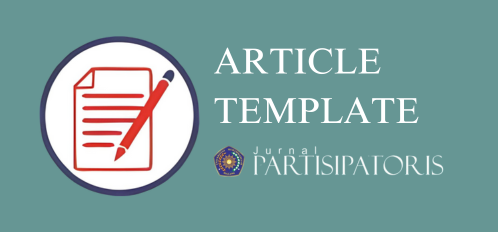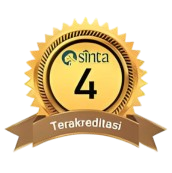Dominasi Patriarki dalam Budaya Merariq Kodeq di Lombok Timur
DOI:
https://doi.org/10.22219/jp.v3i2.20097Keywords:
domination, merariq kodeq patriarchy,post-feministAbstract
Youth marriage had been the problem in all over regionals in Indonesia, without exception what had occurred in Sasak ethnic in Lombok. Merariq culture is a culture to kidnap a girl without knowing by parents in the night. Merariq kodeq is a marriage conducted by kidnapping a girl in young age. The culture of merariq is regarded as the highest contributor of youth marriage number in Lombok. Data BPPKB (Agency for Women Protection and Family Planning) stated that East Lombok had been included in red zone for youth marriage. Besides, the high number of divorce and women as the head of household is because of the ease to get married and divorce in Sasak ethnic Lombok.
This study is aimed to know the domination of patriarchy in merariq kodeq culture and the effect caused by merariq kodeq culture by using qualitative approach case study method. Data collection was conducted by in-depth interview, observation and documentation. Post-feminist theory of Luce Irigaray used as reference to discuss patriarchy domination in merariq kodeq culture. Domination occurs because of the difference of men and women in symbolic norms, in masculine and patriarchal. Patriarchal position arranged by conformation a genealogy by others.
Domination of patriarchy in merariq kodeq culture occurs in pre-marriage, household and divorce and children custody. The form of patriarchy domination in pre-marriage visible on merariq values, when a young man who protected by custom rules allowed to kidnap a girl if they get married. The form of domination in household can be seen from domestic sphere, even the girl has her function as a wife but she still have pressure and physical or psychological abuses. The form of domination in divorce is children custody visible during divorce decision, husband as superior decision maker because he has no marriage letter. Besides, post-divorce, their children would be the wife and entrusted to grandparents. The effect of merariq kodeq marriage is 1) the ease of marriage-divorce and physical abuse in household, 2) unreadiness in reproduction and wrong parenting.
Downloads
References
Bourdieu, Pierre. 2010. “Dominasi Maskulin”. Yogyakarta:Jalasutra.
Brooks, Ann. 2011. “Posfeminisme dan Cultural Studies: Sebuah Pengantar Paling Komprehensif” (terjemahan S. Kunto Adi Wibowo). Yogyakarta: Jalasutra.
Denzin,Norman K, Lincoln,Yvonna S. 2005. “The Sage Handbook Of Qualitative Research”. India:SAGE Publications.
Denzin,Norman K & Lincoln,Yvonna S. 2009. “Handbook Of Qualitative Research”. Yogyakarta:Pustaka Pelajar.
Irigaray. Luce. 2005. “Aku, Kamu, Kita:Belajar Berbeda”. Jakarta:Kepustakaan Populer Gramedia.
Lukman, Lalu. 2008. “Tata Budaya Adat Sasak Di Lombok”. Lombok Timur:Pusakanda.
Robert. 2011. “Studi Kasus: Desain & Metode”. Jakarta:PT Rajagrafindo Persada.
Sarup, Madan. 2011. “Panduan Pengantar Untuk Memahami Postrukturalisme dan Posmodernisme” (terjemahan Medhy Aginta Hidayat). Yogyakarta: Jalasutra.
Yasin, Nur. 2008. “Hukum Perkawinan Islam Sasak”. Malang:Malang Press.
Jurnal, Internet, Makalah, dan Atikel Ilmiah lainnya”
Liana, Rahayu. 2006. “Perkawinan Merarik Menurut Hukum Suku Sasak Lombok Nusa Tenggara Barat. (tesis) diakses 24 Oktober 2016 dari: http://eprints.undip.ac.id/18807/1/RAHAYU_LIANA.pdf
.
Downloads
Published
How to Cite
Issue
Section
License

This work is licensed under a Creative Commons Attribution-ShareAlike 4.0 International License.
Authors who publish with Jurnal Partisipatoris agree to the following terms:
- For all articles published in the Jurnal partisipatoris, copyright is retained by the authors. Authors give permission to the publisher to announce the work with conditions. When the manuscript is accepted for publication, the authors agree to the automatic transfer of non-exclusive publishing rights to the publisher.
- Authors retain copyright and grant the journal right of first publication with the work simultaneously licensed under a Creative Commons Attribution-ShareAlike 4.0 International License that allows others to share the work with an acknowledgment of the work's authorship and initial publication in this journal.
- Authors are able to enter into separate, additional contractual arrangements for the non-exclusive distribution of the journal's published version of the work (e.g., post it to an institutional repository or publish it in a book), with an acknowledgment of its initial publication in this journal.
- Authors are permitted and encouraged to post their work online (e.g., in institutional repositories or on their website) prior to and during the submission process, as it can lead to productive exchanges, as well as earlier and greater citation of published work (See The Effect of Open Access).











